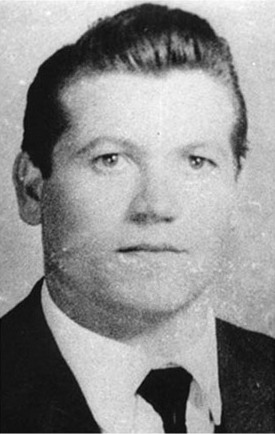
Bernardo Provenzano was an Italian mobster and chief of the Sicilian Mafia clan known as the Corleonesi, a Mafia faction that originated in the town of Corleone, and de facto the boss of bosses. His nickname was Binnu u tratturi because, in the words of one informant, "he mows people down". Another nickname was il ragioniere, due to his apparently subtle and low-key approach to running his crime empire, at least in contrast to some of his more violent predecessors.
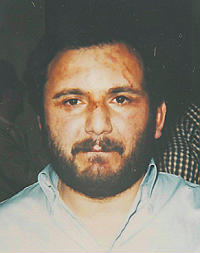
Giovanni Brusca is an Italian mobster and former member of the Corleonesi clan of the Sicilian Mafia. He had a major role in the 1992 murders of Antimafia Commission prosecutor Giovanni Falcone and businessman Ignazio Salvo, and once stated that he had committed between 100 and 200 murders. Brusca had been sentenced to life imprisonment in absentia for Mafia association and multiple murder. He was captured in 1996, turned pentito, and his sentence reduced to 26 years in prison. In 2021, Brusca was released from prison.
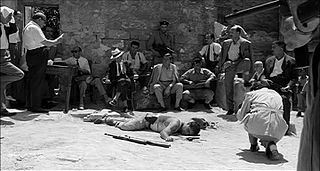
Salvatore Giuliano is a 1962 Italian drama film directed by Francesco Rosi. Using techniques of the documentary film, it recounts the criminal career of famous Sicilian bandit Salvatore Giuliano between 1943 and 1950, his death. In 2008, the film was included in the Italian Ministry of Cultural Heritage's 100 Italian films to be saved, a list of 100 films that "have changed the collective memory of the country between 1942 and 1978."
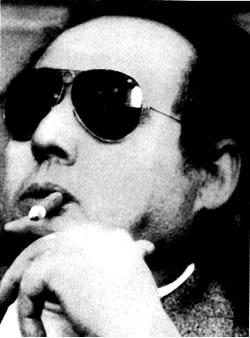
The Corleonesi Mafia clan was a faction within the Corleone family of the Sicilian Mafia, formed in the 1970s. Notable leaders included Luciano Leggio, Salvatore Riina, Bernardo Provenzano, and Leoluca Bagarella.

Giuseppe Graviano is an Italian mafioso from the Brancaccio quarter in Palermo. He also was one the men of the death squad that murdered Salvatore Contorno's relatives. He is currently serving several life sentences. He and his three siblings became members of the Sicilian Mafia Commission for the Brancaccio-Ciaculli mandamento, substituting Giuseppe Lucchese who was in prison.
Santino Di Matteo, also known as Mezzanasca, is an Italian former member of the Sicilian Mafia from the town of Altofonte in the province of Palermo, Sicily, Italy.

Girolamo Li Causi was an Italian politician and a leader of the Italian Communist Party who was a prominent figure in the struggle for land reform and against the Mafia in Sicily. He labelled large estates Sicily's central problem.
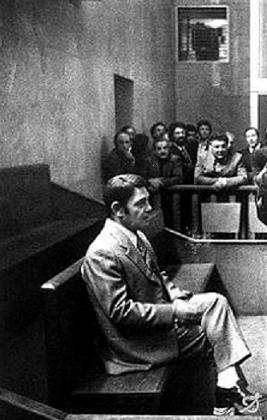
Gerlando Alberti, nicknamed 'u Paccarè, was a member of the Sicilian Mafia. He belonged to the Porta Nuova family in Palermo headed by Giuseppe Calò.
Pietro Tagliavia is a member of the Sicilian Mafia. Despite his young age, he is considered to be one of the upcoming leading Mafiosi of Cosa Nostra in Palermo.
Raffaele Ganci was a member of the Mafia in Sicily from the Noce neighbourhood in Palermo. He was considered to be the right-hand man of Cosa Nostra boss Totò Riina and sat on the Sicilian Mafia Commission.

Gaspare Spatuzza is a Sicilian mafioso from the Brancaccio quarter in Palermo. He was an assassin for the brothers Filippo and Giuseppe Graviano who headed the Mafia family of Brancaccio. After the arrest of the Gravianos in January 1994, he apparently succeeded them as the regent of the Mafia family. He was arrested in 1997 and started to cooperate with the judicial authorities in 2008. In his testimony, he stated that media tycoon and then prime minister Silvio Berlusconi made a deal with the Sicilian Mafia in 1993 that put the country in the hands of Cosa Nostra.

Giuseppe "Pino" Puglisi was a Roman Catholic priest in the rough Palermo neighbourhood of Brancaccio. He openly challenged the Sicilian Mafia who controlled the neighbourhood, and was killed by them on his 56th birthday. His life story has been retold in a book, Pino Puglisi, il prete che fece tremare la mafia con un sorriso (2013), and portrayed in a film, Come Into the Light in 2005. He is the first person killed by the Mafia who has been beatified by the Catholic Church.
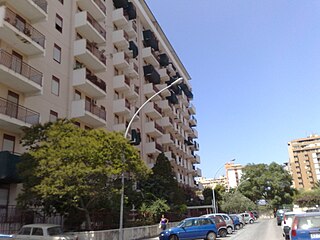
The via D'Amelio bombing was a terrorist attack by the Sicilian Mafia, which took place in Palermo, Sicily, Italy, on 19 July 1992. It killed Paolo Borsellino, the anti-mafia Italian magistrate, and five members of his police escort: Agostino Catalano, Emanuela Loi, Vincenzo Li Muli, Walter Eddie Cosina, and Claudio Traina.
Giuseppe Casarrubea was an Italian historian and author.

Terrorism in Italy is related to political and subversive terrorism activities, carried out by various groups and organizations with different and sometimes conflicting methods, motivations and interests. This article is primarily about late 20th-century and early 21st-century terrorism.

The Capaci bombing was a terror attack by the Sicilian Mafia that took place on 23 May 1992 on Highway A29, close to the junction of Capaci, Sicily. It killed magistrate Giovanni Falcone, his wife Francesca Morvillo, and three police escort agents, Vito Schifani, Rocco Dicillo and Antonio Montinaro; agents Paolo Capuzza, Angelo Corbo, Gaspare Bravo and Giuseppe Costanza survived.
The term State-Mafia Pact describes an alleged series of negotiations between important Italian government officials and Cosa Nostra members that began after the period of the 1992 and 1993 terror attacks by the Sicilian Mafia with the aim to reach a deal to stop the attacks; according to other sources and hypotheses, it began even earlier. In summary, the supposed cornerstone of the deal was an end to "the Massacre Season" in return for a reduction in the detention measures provided for Italy's Article 41-bis prison regime. 41-bis was the law by which the Antimafia pool led by Giovanni Falcone had condemned hundreds of mafia members to the "hard prison regime". The negotiation hypothesis has been the subject of long investigations, both by the courts and in the media. In 2021, the Court of Appeal of Palermo acquitted a close associate of former prime minister Silvio Berlusconi, while upholding the sentences of the mafia bosses. This ruling was confirmed by the Italian Supreme Court of Cassation in 2023.
The Graviano family is a Sicilian Mafia clan, composed of four mafioso siblings: Benedetto, Filippo, Giuseppe and Nunzia. Their father was Michele Graviano, uomo d'onore that belonged to the Brancaccio Mafia family and was murdered by Gaetano Grado in 1982.
Events during the year 1993 in Italy.











